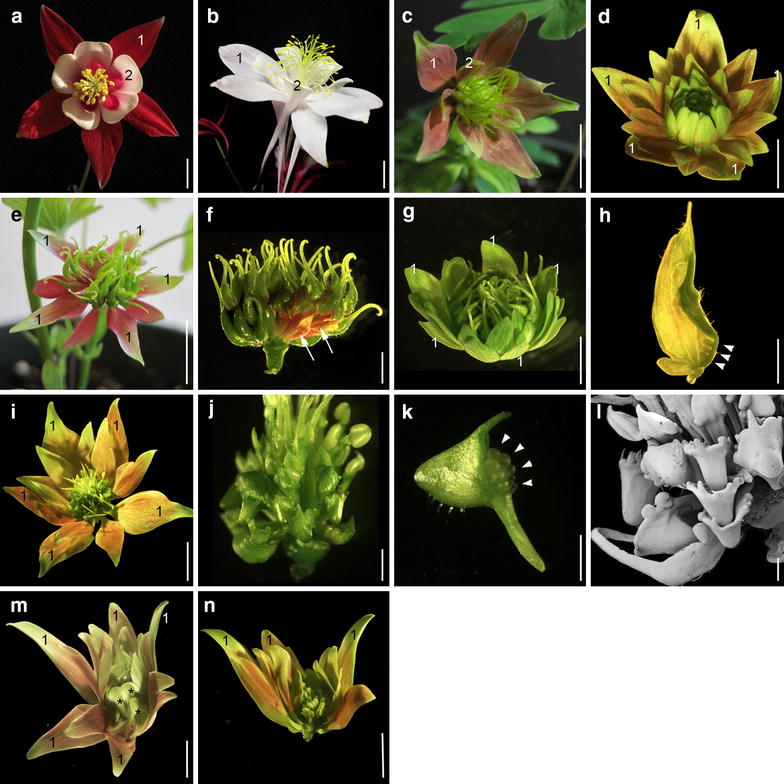Fig. 1.

Phenotypes recovered in Aquilegia x coerulea AqPI-VIGS flowers. a Wild-type flower with labeled first whorl sepals (1) and second whorl petals (2). b Flower with only AqANS-silencing, sepals and petals labeled as in a. c–g, i, m, n Range of floral phenotypes recovered from AqPI-VIGS plants. Wherever possible, we have indicated the first whorl sepals with the label “1.” All other sepals are transformed petals or stamens. In most of these flowers, all sepals, regardless of their position, show varying degrees of color loss, ranging from pale pink (e.g., c, d) to pale green (e.g., g). While half of the recovered flowers exhibited the standard B class mutant phenotype with petal to sepal and stamen to carpel transformation (e.g., c), we commonly observed transformations in which the outer whorls of reproductive organs became sterilized, most often into sepals, rather than the expected stamen to carpel transformation (e.g., d, g, i, m, n). Weak or variable silencing produced complex organs, including sepal/carpels, as seen in the flower in e, which is shown with its perianth removed in f. Arrows indicate sepaloid base of chimeric carpels. h A single sepal/carpel chimeric organ from the flower in g, with ectopic ovules indicated by arrowheads. Also observed in inner whorls were petal/carpels, as shown in i–l, and sepal/petals, as in m (asterisks indicate inner petaloid organs). The reproductive whorls of the flower in i are shown under light microscopy in j and scanning electron microscopy in l. A single petal/carpel chimera is shown in k, with arrowheads indicating ectopic ovules. In flowers showing the weakest silencing, the petals and outermost stamens were transformed into sepals, but internal stamen whorls retained their identity (n). Size bars 10 mm in a–e, g, i, m, n; = 2.5 mm in f, h, j; = 1 mm in k and l
